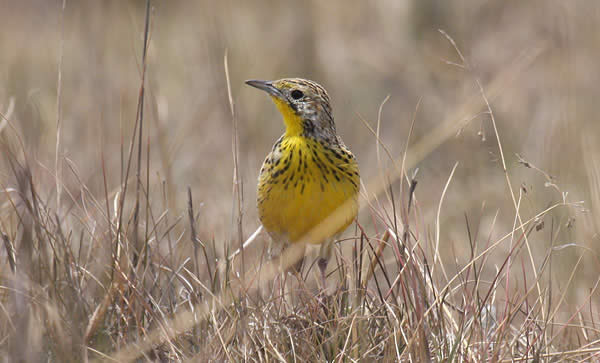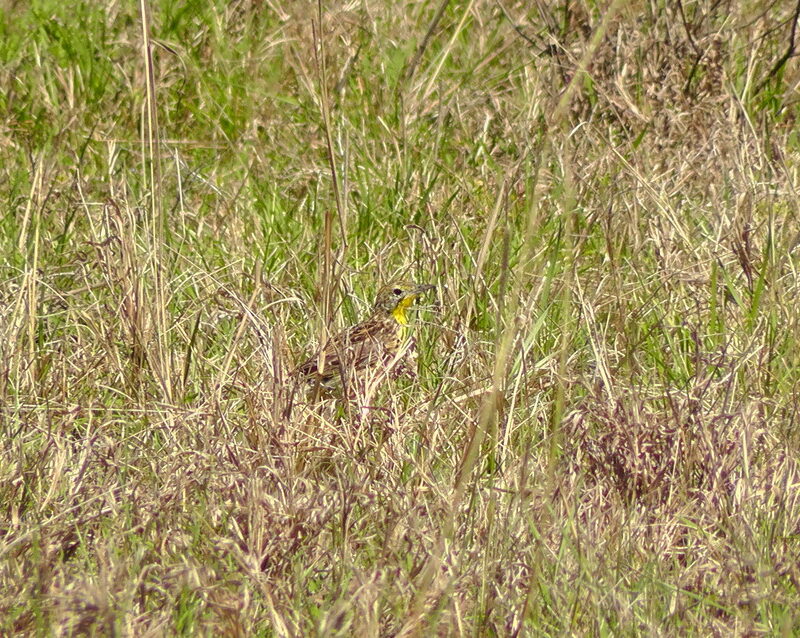Sharpe’s Longclaw
Species Data
Class: Aves
Order: Passeriformes
Family: Motacillidae
Scientific Name: Macronyx sharpei
IUCN Red List status: Endangered
Description
Sharpe’s Longclaw is a bird endemic to Kenya. The Kikuyu people call it gathonjo ka werũ-ini, meaning “a weaver-like bird that lives only in the grasslands”. The English name commemorates the British 19th century ornithologist Richard Bowdler Sharpe.
Estimates suggest that only 10,000 and 19,000 individuals of Sharpe’s Longclaw left. The bulk of the population is restricted to three main locations: the Kinangop Plateau, Mau Narok, and the Uasin Gishu grasslands.
Behaviour
Sharpe’s Longclaw is a monogamous, very sedentary species, restricted to high altitude, open, short grasslands between 1850 and 3400 meters. Birds of the species are territorial, forming permanent groups of two to seven individuals, depending on the quality of their habitat. These groups occupy territories ranging up to 5.6 hectares.


Habitat
Importantly, Sharpe’s Longclaw depends on tussock grasses. This is the common name for grass species that grow in clumps or tufts that often thrive in dry habitats. Sharpe’s Longclaw depends on them for three key aspects of its survival:
Nesting: the birds form their nests at the base of tussock grasses.
Feeding: Sharpe’s Longclaw feeds on insects such as grasshoppers and beetles found at the base of tussocks.
Protection from predators: there is evidence that the bird hides in the tussocks when threatened.
Threats and Conservation
Tussock grasslands, found primarily on privately-owned land, are rapidly declining due to the following threats:
Their unpalatability to livestock causing pastoralists to remove them.
An increase in crop-farming replacing grasslands with cultivated lands.
Draining of wetlands.
Introduction of exotic tree species such as Eucalyptus globulus, Acacia mearnsii and Pinus radiata.
Thus Sharpe’s Longclaw is rapidly losing the habitat it critically depends upon, and outside the protected area on the Kinangop Plateau destruction of the tussock grasslands continues. As a result, the IUCN has classified this species as Endangered on its Red List.
Protected by the following WLT Projects
References
Search and Serendipity birding blog: Encountering Sharpe’s Longclaw on the Kinangop Plateau http://djringer.com/birding/2009/08/01/encountering-sharpes-longclaw-on-the-kinangop-plateau/
